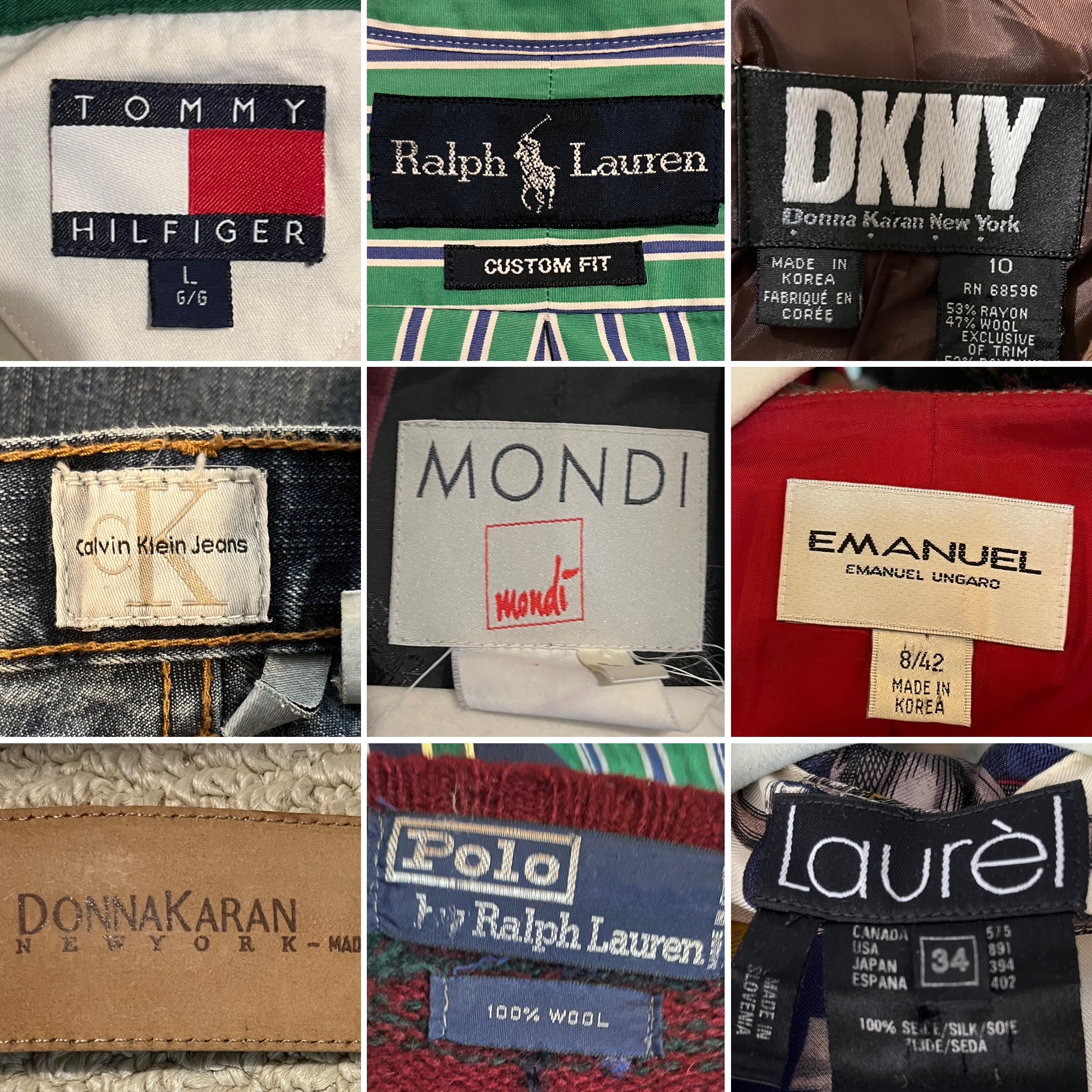The Science Behind Breathability in Branded Clothing Materials
The Science Behind Breathability in Branded Clothing Materials
Blog Article
Recognizing Garments: The Value of Textile Selections in Your Closet
The selection of textile in clothes plays a pivotal role in both appearances and performance. Different materials offer varying degrees of breathability, longevity, and convenience, straight affecting the user's experience. Recognizing these nuances can enhance one's closet significantly. Lots of overlook how these options can influence not simply individual design, yet also sustainability. What textile choices could redefine your closet and straighten it with both design and duty?
The Duty of Textile in Fashion and Functionality

Usual Material Kinds and Their Qualities
When selecting clothing, understanding the features of typical material kinds is vital for making educated options. Cotton, a widely-used all-natural fiber, is known for its breathability, gentleness, and convenience, making it ideal for sportswear and day-to-day garments. Linen, another natural alternative, flaunts exceptional moisture-wicking residential or commercial properties and an unique structure, perfect for warm climates.Wool, frequently preferred for its heat and longevity, varies in fineness; merino woollen is soft versus the skin, while coarser types are used for outerwear. Artificial materials like polyester and nylon supply toughness and resistance to wrinkles, making them preferred for activewear and traveling garments. Lastly, blends, which incorporate all-natural and synthetic fibers, can improve capability while keeping convenience. By recognizing these material attributes, individuals can choose apparel that straightens with their way of life and visual choices.
Breathability and Convenience: Selecting the Right Fabrics for Various Climates
Choosing the best materials for different environments can greatly improve convenience and overall wearability. Breathable products are vital in warm climates, as they allow air circulation and moisture evaporation. Fabrics such as cotton, linen, and moisture-wicking synthetics properly attract sweat far from the body, keeping the wearer cool and completely dry. Conversely, in chillier environments, thicker materials like wool or fleece provide insulation while keeping breathability, guaranteeing heat without overheating.Additionally, the selection of fabric weight plays a crucial function; light-weight textiles are preferable for summer season, whereas larger options are matched for winter season wear. Recognizing the one-of-a-kind residential properties of each material enables individuals to dress suitably for varying climate condition. Ultimately, picking breathable and comfy materials tailored to details climates can considerably boost daily convenience and improve the total experience of wearing garments.
Longevity and Treatment: Exactly How Textile Affects Durability of Your Wardrobe
Choosing the ideal products can considerably influence the durability and care requirements of a closet. Fabrics such as cotton and polyester are understood for their durability and convenience of maintenance, making them perfect for everyday wear. On the other hand, delicate products like silk and lace require even more careful handling and specialized cleaning techniques, which can raise the moment and initiative required for care. Branded Clothing.Durability is likewise affected by the textile's weave and coating; securely woven materials often tend to resist damage better than freely woven alternatives. In addition, synthetic blends frequently give boosted resilience, incorporating the ideal qualities of several fibers.Understanding the treatment instructions for every material is essential, as inappropriate drying or cleaning can bring about premature wear. Inevitably, choosing long lasting products can lead to a longer-lasting closet, decreasing the regularity of substitutes and adding to a much more sustainable fashion selection
The Influence of Fabric on Fit and Shape

Sustainable Textile Options: Making Eco-Friendly Decisions
The influence of fabric expands beyond fit and shape to include ecological variables, triggering a growing rate of interest in sustainable textile options. Environment-friendly textiles, such as organic cotton, hemp, and Tencel, are obtaining grip among customers that prioritize sustainability in their wardrobes. These materials are commonly generated with fewer chemicals and water, reducing their environmental footprint.Additionally, recycled fabrics, made from post-consumer waste, supply an ingenious service to the fabric sector's air pollution issue. Brands significantly advice embrace openness in their sourcing methods, enabling customers to make educated choices regarding their purchases.Choosing sustainable fabrics not just sustains honest practices however additionally encourages the fashion market to take on more responsible production methods. As understanding of environmental issues climbs, people are urged to assess the lasting impact of their fabric selections, cultivating a motion in the direction of a much more environmentally conscious and sustainable technique to fashion.
Boosting Style: Just How Textile Can Transform an Outfit
While lots of might focus on color and cut when choosing a clothing, the selection of material plays an important role in elevating design and enhancing total appearance. Various materials share distinctive state of minds and messages; for instance, silk emanates luxury and refinement, while jeans uses a casual, kicked back vibe. The structure and drape of a material can considerably modify the shape, with structured fabrics giving a polished appearance and softer ones creating an extra fluid, relaxed aesthetic.Moreover, the weight of the textile influences wearability across seasons. Light-weight materials like linen and cotton are suitable for summertime, while heavier products such as woollen and velvet give warmth and beauty in cooler months. Understanding fabric homes, such as breathability and stretch, likewise equips people to make enlightened options that improve comfort without endangering design. Inevitably, the appropriate textile can change an outfit from normal to phenomenal, making it a vital factor to consider in any closet.
Often Asked Questions
Just how Do I Identify the Fabric Web Content of My Garments?
To determine fabric material, one can check out treatment labels, conduct burn examinations for fiber identification, or seek advice from material examples. These techniques aid separate products, making certain notified selections for clothes treatment and upkeep in daily wear.
Can Textile Choice Affect My Mood or Confidence?
Material option can considerably impact a person's mood and confidence. Branded Clothing. Certain materials may evoke sensations of convenience or sophistication, while others can feel restrictive or uncomplimentary, inevitably influencing self-perception and emotional well-being throughout the day
What Fabrics Are Finest for Sensitive Skin?
For individuals with sensitive skin, all-natural fabrics like bamboo, cotton, and bed linen are commonly advised. These materials are breathable, hypoallergenic, and much less most likely to cause inflammation, making them suitable options for comfort read and skin health.
Exactly how Do I Correctly Clean and Care for Different Fabrics?
To correctly care and wash for various fabrics, one should take into consideration each material's certain needs, including temperature level settings, cleaning agents, and drying out methods, ensuring long life and maintaining the textile's initial qualities for optimal use.
Are There Details Fabrics for Athletic or Performance Use?
Sports or performance wear usually makes use of textiles such as polyester, nylon, and spandex. These products are made for moisture-wicking, breathability, and flexibility, enhancing activity and convenience throughout physical activities while providing resilience and support. On the other hand, in chillier climates, thicker textiles like woollen or fleece provide insulation while retaining breathability, ensuring warmth without overheating.Additionally, the option of material weight plays a vital function; lightweight fabrics are better for summer, whereas heavier alternatives are suited for wintertime wear. In contrast, delicate materials like silk and shoelace call for even more cautious handling and specialized cleansing methods, which can increase the time and effort needed for care.Durability is additionally influenced by the fabric's weave and coating; firmly woven textiles have a tendency to resist wear and tear far better than loosely woven options. In comparison, stiff textiles can limit activity but give a classic, refined look.Moreover, the thickness and texture of the fabric can affect the visual assumption of body form. The influence of material prolongs past fit and shape to encompass ecological aspects, motivating an expanding rate of interest in lasting material options. The appearance and drape of a material can significantly modify the shape, with structured materials giving a sleek appearance and softer ones producing a much more fluid, loosened up aesthetic.Moreover, the weight of the fabric influences wearability throughout periods.
Report this page